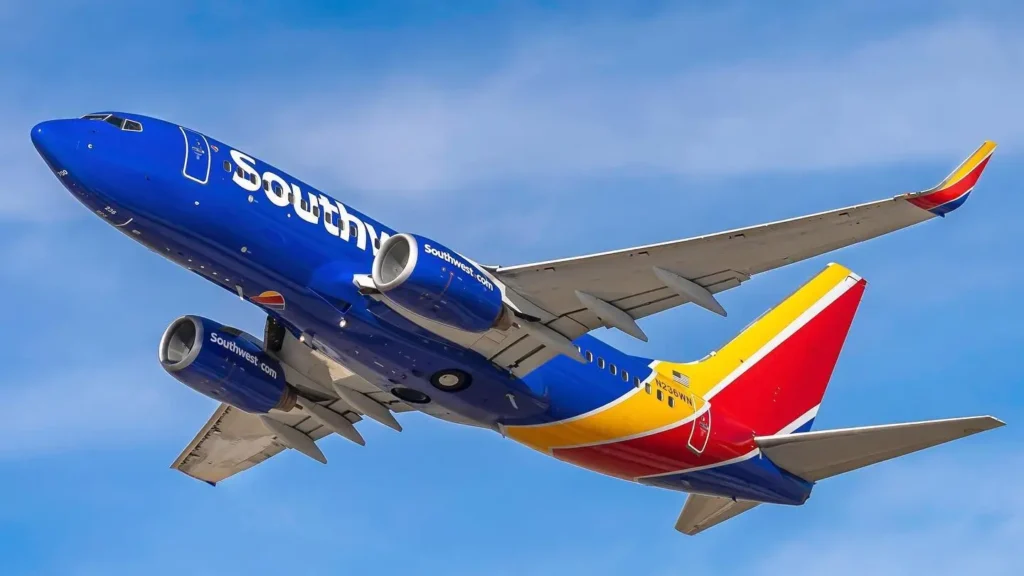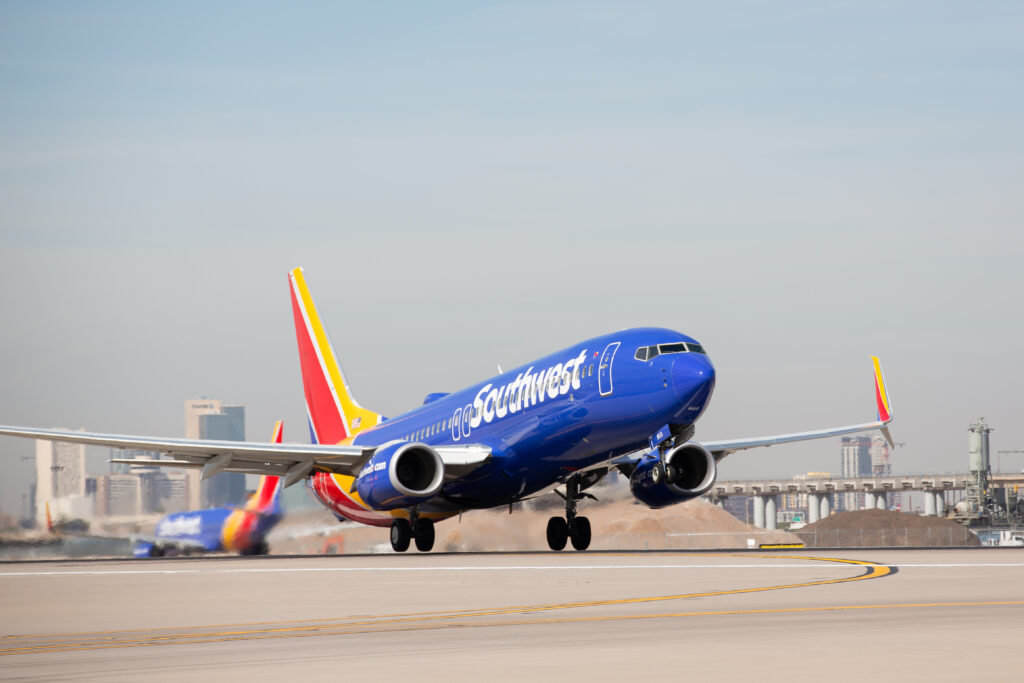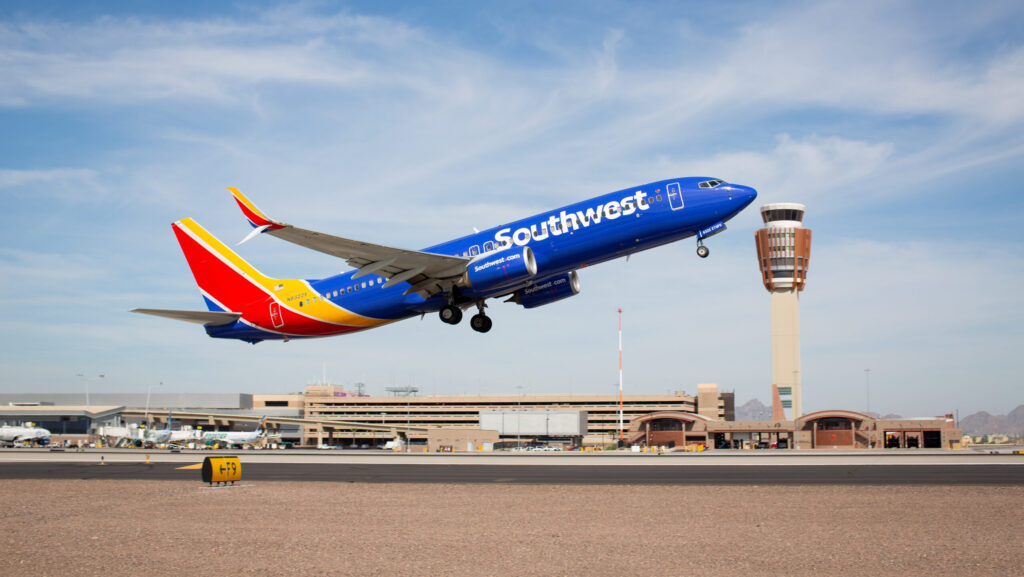Southwest Airlines (WN) is known for its rapid turns, quirky humor, and sheer domestic dominance. But over the last decade, the carrier has gradually built up a nimble and strategically placed international footprint – focused almost entirely on leisure demand to Mexico, Central America, and the Caribbean. As the data from March 2025 shows, that strategy isn’t just working. It’s thriving.
This isn’t a tale of widebodies flying across oceans or global alliances opening up exotic codeshares. It’s all about the story of a low-cost juggernaut carving out a highly focused, but fiercely competitive slice of the international pie.

Cancun: The Sun-Kissed Epicenter
It all begins in Cancun (CUN) – Southwest’s undisputed international anchor. Six of its top 20 busiest international routes touch down at the Yucatán Peninsula’s beachside gateway, making it the single most-served international destination in the airline’s network.
The busiest of all is Houston-Hobby (HOU) to Cancun, with over 83,000 seats and 537 monthly flights. It’s not just the most flown route, it’s also Southwest’s leading international market by ASMs (66 million), reflecting both strong demand and decent flight length for a short-haul network.
Moreover, Baltimore, Chicago-Midway, Denver, St. Louis, and Kansas City all send thousands of passengers south to Cancun as well, forming a tight web of point-to-point sunseeker traffic. These aren’t connections feeding a hub; they’re nonstops for vacationers who want to get to the beach fast—and affordably.

Houston Hobby: The International Rebel
While many think of Baltimore or Midway as key airports in Southwest’s operation, Houston-Hobby (HOU) has emerged as its most globally connected city. Five of Southwest’s top 20 international routes start here, including services to Cancun, San Jose del Cabo (SJD), Puerto Vallarta (PVR), Guanacaste (LIR) in Costa Rica, and San Jose (SJO), also in Costa Rica.
It’s an impressive array for a domestic-focused LCC, and all of it happens without interline or partner feed. Instead, Southwest is tapping into Houston’s massive VFR and leisure markets, using HOU as a low-cost counterweight to United’s international juggernaut at IAH.

Baltimore’s Caribbean Push, Orlando Service
The next hub is Baltimore/Washington (BWI), which serves as a key international launchpad for Caribbean service. From BWI, Southwest operates high-frequency routes to Cancun, Montego Bay, and Punta Cana, all of which feature prominently in the top 10 busiest international routes.
In fact, the BWI–Montego Bay route delivers more ASMs (nearly 90 million) than even Houston–Cancun, thanks to its longer stage length. This shows how Caribbean flying is reshaping the profile of Southwest’s network.
If any airport challenges Houston and Baltimore for international influence within Southwest’s network, it’s Orlando (MCO). Long seen as a domestic stronghold for the airline, Orlando has quietly become a launching pad for flights across the Caribbean and into Central America.
The March 2025 data reveals five international routes from MCO in the top 20, serving Montego Bay, Aruba, Nassau, San Jose, Punta Cana, and Grand Cayman. These routes aren’t the most frequent, but they rank high in ASMs due to their longer distances and sustained seasonal demand.
| Rank | Route | Monthly Flights | Seats | ASMs |
| 1 | Houston-Hobby (HOU) – Cancun (CUN) | 537 | 83,351 | 66,013,992 |
| 2 | Houston-Hobby (HOU) – San Jose del Cabo (SJD) | 370 | 55,150 | 55,150,000 |
| 3 | Baltimore (BWI) – Cancun (CUN) | 367 | 60,257 | 73,696,973 |
| 4 | Tampa (TPA) – Havana (HAV) | 360 | 63,000 | 21,609,000 |
| 5 | Baltimore (BWI) – Montego Bay (MBJ) | 360 | 63,000 | 89,838,000 |
| 6 | Phoenix (PHX) – San Jose del Cabo (SJD) | 360 | 52,824 | 38,086,104 |
| 7 | Orlando (MCO) – Montego Bay (MBJ) | 304 | 53,200 | 38,144,400 |
| 8 | Denver (DEN) – Cancun (CUN) | 240 | 40,272 | 67,213,968 |
| 9 | Baltimore (BWI) – Punta Cana (PUJ) | 236 | 37,396 | 56,243,584 |
| 10 | Chicago-Midway (MDW) – Cancun (CUN) | 228 | 38,524 | 55,127,844 |
| 11 | Saint Louis (STL) – Cancun (CUN) | 226 | 36,318 | 44,961,684 |
| 12 | Houston-Hobby (HOU) – Guanacaste (LIR) | 196 | 30,588 | 44,444,364 |
| 13 | Houston-Hobby (HOU) – San Jose (SJO) | 188 | 32,676 | 49,961,604 |
| 14 | Houston-Hobby (HOU) – Puerto Vallarta (PVR) | 188 | 28,676 | 25,148,852 |
| 15 | Orlando (MCO) – Aruba (AUA) | 180 | 27,660 | 36,428,220 |
| 16 | Orlando (MCO) – Nassau (NAS) | 180 | 26,996 | 8,656,418 |
| 17 | Orlando (MCO) – Grand Cayman (GCM) | 180 | 25,740 | 16,190,460 |
| 18 | Orlando (MCO) – San Jose (SJO) | 180 | 31,180 | 39,972,760 |
| 19 | Orlando (MCO) – Punta Cana (PUJ) | 180 | 31,436 | 33,447,904 |
| 20 | Kansas City (MCI) – Cancun (CUN) | 180 | 30,668 | 41,126,788 |

Bottom Lines
Southwest Airlines isn’t trying to be a global airline in the traditional sense. There are no flights to Paris, no strategic alliances, no codeshares to Asia. But in its own way, it connects millions of Americans to international destinations that make sense for its model.
And based on the March 2025 data, it’s not just dabbling anymore. Southwest’s international routes are thriving, especially in Mexico and the Caribbean. The strategy is clear, the execution is focused, and the demand? It keeps climbing.
In short: Southwest goes global—on its own terms.
Stay tuned with us. Further, follow us on social media for the latest updates.
Join us on Telegram Group for the Latest Aviation Updates. Subsequently, follow us on Google News
Data Sourced from Cirium Diio

